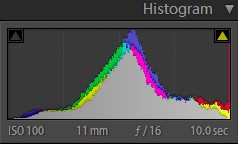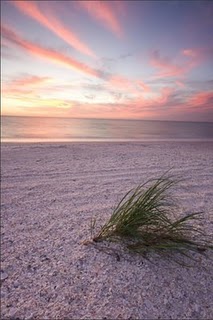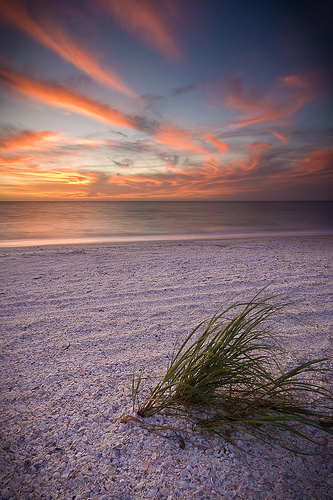Grass on Bonita Beach
My wife and I spent the week with my parents down in Bonita Springs, FL. My father is an amateur photographer, just like me, so each day we would go down to the beach and shoot the sunset. The problem is there is nothing but sand and water at most of the beaches in the a rea. No matter how spectacular the sunset is, without a foreground subject, a photograph will end up boring. In this case, I found a little tuft of sea grass sticking out of the beach which provided exactly what I needed.
rea. No matter how spectacular the sunset is, without a foreground subject, a photograph will end up boring. In this case, I found a little tuft of sea grass sticking out of the beach which provided exactly what I needed.
I set up with my Canon Rebel XTi, Sigma 10-20, a 2 stop hard edge graduated neutral density (GND) filter, my tripod, and my homemade remote shutter trigger and went to town. Every time I go out and shoot a sunset, I am reminded that I really wish I had a 3 s top GND filter, but I am able to make due with the 2 stop one plus a little bit of post processing. I wanted a long exposure, so I also added a polarizer into the mix which functioned as a neutral density filter since there was little polarized light shooting into the sun. I chose f/16 so as to get maximum depth of field.
top GND filter, but I am able to make due with the 2 stop one plus a little bit of post processing. I wanted a long exposure, so I also added a polarizer into the mix which functioned as a neutral density filter since there was little polarized light shooting into the sun. I chose f/16 so as to get maximum depth of field.
To the left is one of the images that I started out with, before any processing.
I had purposely exposed to the right so as to make sure and not lose any shadow detail in any part of the image. Some people recommend underexposing sunset shots to get those vibrant colors, but I disagree. That’s fine if you only want silhouettes, but if you want to be able to see the foreground, you really must make the exposure as bright as possible. Remember, you can always darken a bright image (if it’s not blown out), but brightening a dark image will end up with a noisy turd. You can see from the histogram above that there is a tiny bit of the image that is blown out (it was a very small part of the sky) and most o f the tones in the image are in the middle to high end. I shot in RAW (as I always do), planning on bringing the exposure down later. For me, RAW is always the way to go – not because I can “fix my screw ups” later – but because I can expose the image in such a way that I maximize the signal to noise ratio and can get great colors and skies. Ken Rockwell can go and tell me all day why I should be shooting JPG, but I understand the limitations of both and still pick RAW every day of the week. I’m glad it works for him, but RAW fits my workflow far better.
f the tones in the image are in the middle to high end. I shot in RAW (as I always do), planning on bringing the exposure down later. For me, RAW is always the way to go – not because I can “fix my screw ups” later – but because I can expose the image in such a way that I maximize the signal to noise ratio and can get great colors and skies. Ken Rockwell can go and tell me all day why I should be shooting JPG, but I understand the limitations of both and still pick RAW every day of the week. I’m glad it works for him, but RAW fits my workflow far better.
To the right is the image I ended up with after some Lightroom tweaks. Aside from some minor cropping and rotating (the horizon wasn’t level, despite my best efforts on site), I added a 1 stop software GND, increased vibrance and clarity, and added a small vignette. That’s about all.
Let me know what you think!